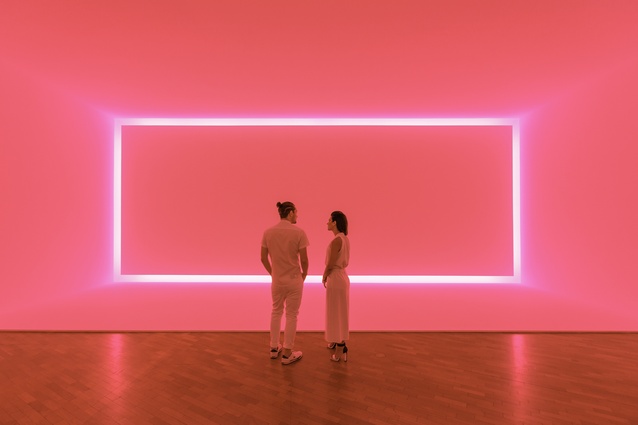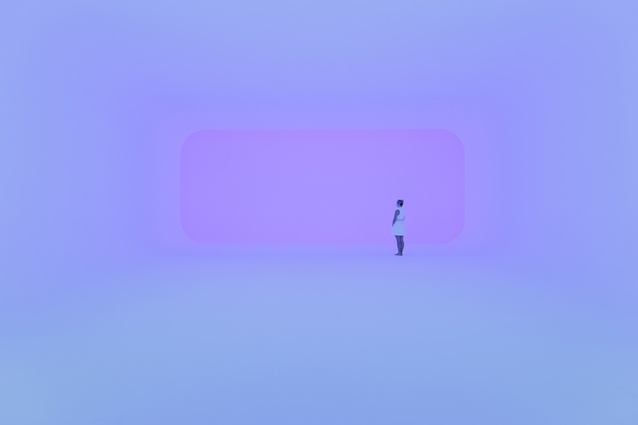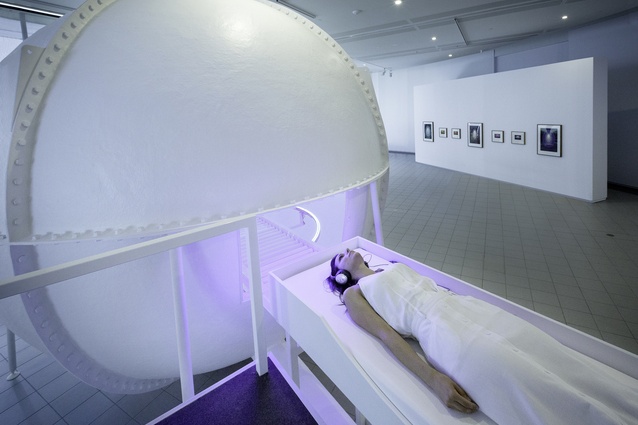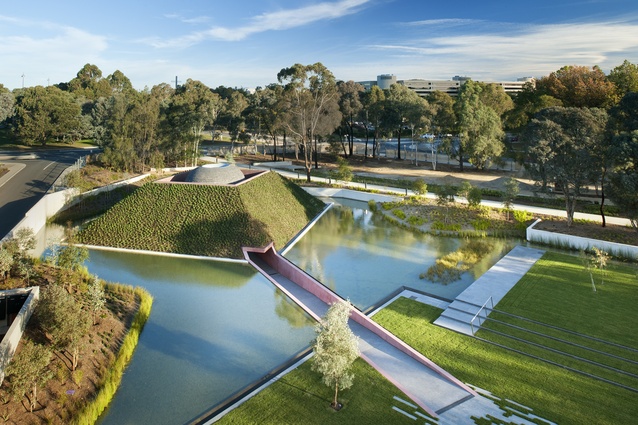Experiments with light: James Turrell dazzles at the NGA
If you are drawn to the spiritual dimension in art, the NGA's James Turrell exhibition could prove to be a revelation.
James Turrell is a veteran Californian artist who throughout a career spanning almost half a century has employed light as a vehicle through which to manipulate the viewer’s perception of space. The Turrell retrospective, currently on display at the National Gallery of Australia in Canberra until June, provides ample examples of his art drawn from the past few decades.
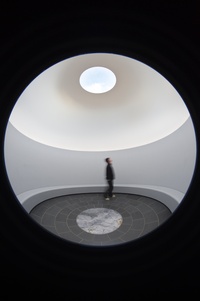
As a theist and a Quaker, Turrell in his experiments with light sees them as part of the process of “seeing the light” and using light as a path to revelation.
In the Bible it is stated that “God is Light” (1 John 1:15) and famously Christ declares “I am the light of the world. He who follows me does not walk in darkness, but will have the light of life” (John 8:12). This idea of employing light as a vehicle through which to liberate our submersion in matter is central to the practice of Turrell and is the basis of much of his art making.
The National Gallery in Canberra installed in its sculpture gardens Turrell’s Within without (2010) Skyspace construction. You enter a square-based pyramid with red ochre interior walls and a basalt stupa in the centre which is illuminated by turquoise water. The stupa has a viewing chamber with a domed space opening up to the sky with a moonstone set into the centre of the floor reflecting the oculus opening above. From here the viewer can contemplate the heavens which appear particularly dramatic at dawn and at dusk.
This installation has been a runaway success with the public and emboldened by this the gallery has embarked on this huge retrospective of Turrell’s art spanning most of his career.
As with much site specific installation art you need to experience it in the flesh. Documentation in the form of prints, drawings and photographs may give you a good idea of what you have missed out on, but it is not like the real thing.
The Canberra exhibition follows similar successful Turrell exhibitions in Los Angeles, Houston and at the Guggenheim in New York. Like these predecessors there is a mixture of exquisite, mainly aquatint, prints, drawings, photographs and models plus several actual installations.
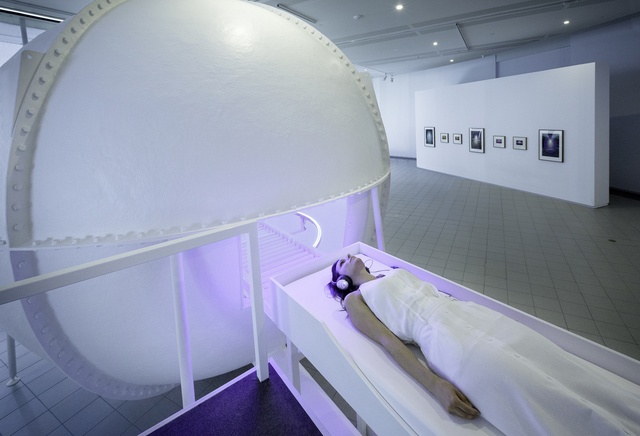
Without doubt, the most impressive installation at this exhibition is the large perceptual cell, Bindu shards (2010).
On the outside it is about as attractive as one of those medical contraptions for full-body imaging. In fact you are asked to empty your pockets, take your shoes off and sign a liability disclaimer form. Then, supervised by two assistants in white lab coats, you are placed on a sliding bed with headphones over your ears and you are slid into this sizeable fibreglass and metal sphere.
For the next 11 minutes you are bombarded with constantly changing flashing patterns of stars, crystals, galaxies, quasars and nebulae. Within a couple of minutes you are completely disorientated losing any sense of physicality and you start to float as if on a cloud and enter into a state of deep meditation.
Despite the assurance from the artist that these physiological experiences are common to all people who go through the process, the secondary psychological resonances remain unique to the individual. What I experienced and the associations which I had in my 11 minutes I doubt would be common to many others.
On emerging from this trance-like state, it took me a few moments to re-orientate myself. With a somewhat unsteady tread I made my way down from the platform containing the perceptual cell.
The experience is somewhat addictive and I was quite prepared to revisit Bindu shards, but my turn was over. This section is heavily booked out in advance with visitors paying A$45 for admission to the exhibition and for a go in the perceptual cell. I gather that the Canberra gallery has now acquired this exhibit, so future visits may be not out of the question.
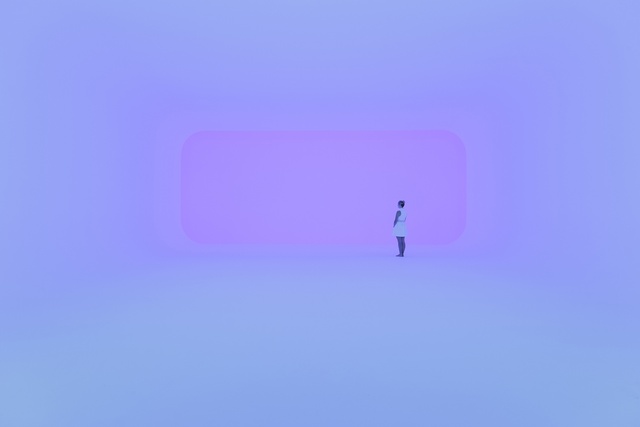
The Ganzfeld effect is a concept of some antiquity, where it was thought that if you spent sufficient time in darkness within some sort of cave you could experience a vision of revelation.
Ganzfeld (German for “complete field”), became an area of considerable scientific investigation and experimentation in the 1930s, where it was established that people would start to hallucinate after staring into a void or field of vision for some time.
Turrell, who studied as an aeronautical engineer, has been experimenting and constructing ganzfelds for some time and the new installation in Canberra, Virtuality squared (2014) is his largest and most ambitious to date. As you enter a light-filled room you experience a sense of weightlessness as your eyes are deceived and colours seem to change in intensity and solid material forms dissolve into space. It is exceptionally effective as you are drawn into a transcendental state while overlooking the void.
Turrell’s exhibition is essentially an exploration into the psycho-physical qualities of light, colour and space and how this has an impact on an individual’s perception of self and the surrounding world.
If you are drawn to the spiritual dimension in art, this is the sort of exhibition which could prove to be a major revelation in your life. Here the artist, as shaman, has entered a spiritual dimension and then systematically constructs for us an environment through which we too can experience this world, one which is not bound by material and physical norms. This is one exhibition which you have to experience to even start to understand it.
James Turrell: A retrospective is on display at the National Gallery of Australia in Canberra until June 8. This article was originally published on The Conversation. Read the original article.

